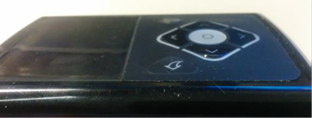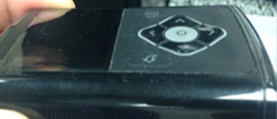Urgent Field Safety Notification
MiniMed™ 600 series insulin infusion pump
This notification is to inform you of a rare and temporary condition in which the keypad buttons on your MiniMed™ 600 series insulin pump may become temporarily stuck, and the keypad becomes unresponsive. This is a field safety notification and you do not need to return or replace your pump. We do ask that you read the important information below to help you understand when this situation might happen, and how to resolve it.
How does the keypad become temporarily unresponsive?
Keypad buttons on the MiniMed™ 600 series insulin pumps may become temporarily unresponsive when the atmospheric pressure around the pump increases or decreases rapidly. This would most likely happen when traveling in an airplane during take-off or landing. If this happens, in most cases you may not even notice because the pump will resolve this on its own.
How will I notice if this happens to my pump?
During this temporary situation, a button may be too difficult to press down or a button can look like it is pressed and stuck in that position.
If you notice the keypad buttons are difficult to press down, the pump will continue to deliver your basal insulin. You may not be able to program a bolus or suspend delivery as the buttons temporarily will not press down, but this will resolve on its own, usually within 30 minutes.
If a button is stuck in a pressed position, after three (3) minutes a “Stuck Button” alarm is triggered which suspends insulin delivery (including basal). You may not be able to clear the alarm as the keypad is unresponsive. In the rare situation where this continues for more than ten (10) minutes, the pump will begin to siren.
Once the alarm is triggered and insulin is suspended, you will be unable to program a bolus or resume insulin delivery until the alarm is cleared.
What should I do if this happens to my pump?
If you experience this keypad condition, and want to resolve it immediately to bolus or clear the alarm, remove the battery cap from the pump and then place it back on.
PLEASE NOTE: You should have a fresh new AA battery available in case your pump prompts you to insert a new battery.
What if I have more questions?
If you have other questions or concerns, you can find an FAQ and a copy of this letter at http://www.medtronicdiabetes.com/notice6
You can also always reach the Medtronic 24-Hour Helpline at 1-888-204-7616.
Note: This only applies to MiniMed™ 600 series insulin pumps. The MiniMed™ Paradigm insulin pumps are not affected by this condition.
You can report a concern to the FDA’s MedWatch Adverse Event Reporting program, online at: http://www.fda.gov/safety/medwatch/howtoreport/
Report by telephone: 1-800-FDA-1088/Fax report: 1-800-FDA-0178.
Medtronic considers patient safety and customer satisfaction our primary priorities. We appreciate your time and attention in reading this important notification.
Frequently asked questions
This is a very rare and temporary condition so we do not expect this to occur. However, if you wish to avoid this completely while in flight, you should temporarily remove the battery cap during take-off and landing and only place it back on after your flight has leveled in altitude.
Remember: It is recommended to have extra batteries and a backup therapy particularly when you travel in the unlikely event that your pump is unavailable.
This is a rare situation and we do not expect this to happen in most cases. However, because of the potential therapy interruption and simple solution, we have chosen to make our patients aware of this condition.
Remember: It is recommended to have extra batteries and a backup therapy particularly when you travel in the unlikely event that your pump is unavailable.
The best action for ensuring therapy is not or is minimally interrupted for this situation is to:
Always carry a fresh new AA battery for the pump.
Always carry an HCP prescribed back up therapy in the unlikely event the pump is not available.
Your pump will only stop delivering insulin if a button is stuck in a pressed position for three (3) minutes and a “Stuck Button” alarm is triggered which suspends insulin.
In the case where the keypad buttons are difficult to press down, your insulin delivery will not be interrupted.
Yes, you may notice the keypad appears depressed when under high external pressure.
The images below may help visualize this:
Normal keypad state:

Keypad in a depressed position:
